 The second day of conventions always seems to go smoother than the first for me. Maybe it’s because I have a better lay of the land, and have a better idea of who I want or need to talk to, or maybe it’s just because I’m too tired to feel overwhelmed. Realistically it is probably a mix of both. But as many people as I missed talking to yesterday I was able to catch up to today and check nearly everyone off of my list, especially a few of the exhibitors with industrial applications, who seemed less busy and more willing to chat.
The second day of conventions always seems to go smoother than the first for me. Maybe it’s because I have a better lay of the land, and have a better idea of who I want or need to talk to, or maybe it’s just because I’m too tired to feel overwhelmed. Realistically it is probably a mix of both. But as many people as I missed talking to yesterday I was able to catch up to today and check nearly everyone off of my list, especially a few of the exhibitors with industrial applications, who seemed less busy and more willing to chat.
![]() 3D printing software developers MXD3D chose to launch the public beta their MakePrintable 3D at this year’s Inside 3D Printing Conference and Expo Santa Clara, and I was lucky enough to get a full walk through of their new cloud-based model repair service. I had heard of MakePrintable previously, but had assumed that it was similar to several of the other similar options already available. However I ended up being quite impressed with how robust and comprehensive the service was, and it immediately became clear to me that they are simplifying a process that was desperately in need of simplification.
3D printing software developers MXD3D chose to launch the public beta their MakePrintable 3D at this year’s Inside 3D Printing Conference and Expo Santa Clara, and I was lucky enough to get a full walk through of their new cloud-based model repair service. I had heard of MakePrintable previously, but had assumed that it was similar to several of the other similar options already available. However I ended up being quite impressed with how robust and comprehensive the service was, and it immediately became clear to me that they are simplifying a process that was desperately in need of simplification.
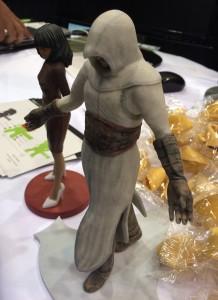 It’s pretty amazing how quickly MakePrintable repairs models, no matter how many errors, holes or flaws the model has. I watched the program take a one-sided model of a bicycle with dozens of non-manifold parts be transformed into a fully 3D printable model in less than a minute. The software easily repaired several parts of the model that had no wall thickness and meshed two intersecting objects together flawlessly. I also got to see several printed examples of models that had been repaired by them. The first figure was wearing a cloak that initially had no wall thickness in several spots, and the second was a figure that had too much detail, including individually modelled hair that the software simplified so it could be printed.
It’s pretty amazing how quickly MakePrintable repairs models, no matter how many errors, holes or flaws the model has. I watched the program take a one-sided model of a bicycle with dozens of non-manifold parts be transformed into a fully 3D printable model in less than a minute. The software easily repaired several parts of the model that had no wall thickness and meshed two intersecting objects together flawlessly. I also got to see several printed examples of models that had been repaired by them. The first figure was wearing a cloak that initially had no wall thickness in several spots, and the second was a figure that had too much detail, including individually modelled hair that the software simplified so it could be printed.
Interestingly, pioneering digital artist Laurence Gartel, who has been using 3D printing and 3D modeling in his art for years, had a nine-year-old 3D model that he was never able to make manifold. He had even paid to have it repaired and no one seemed to be able to do it. MakePrintable made the model printable in less than two minutes.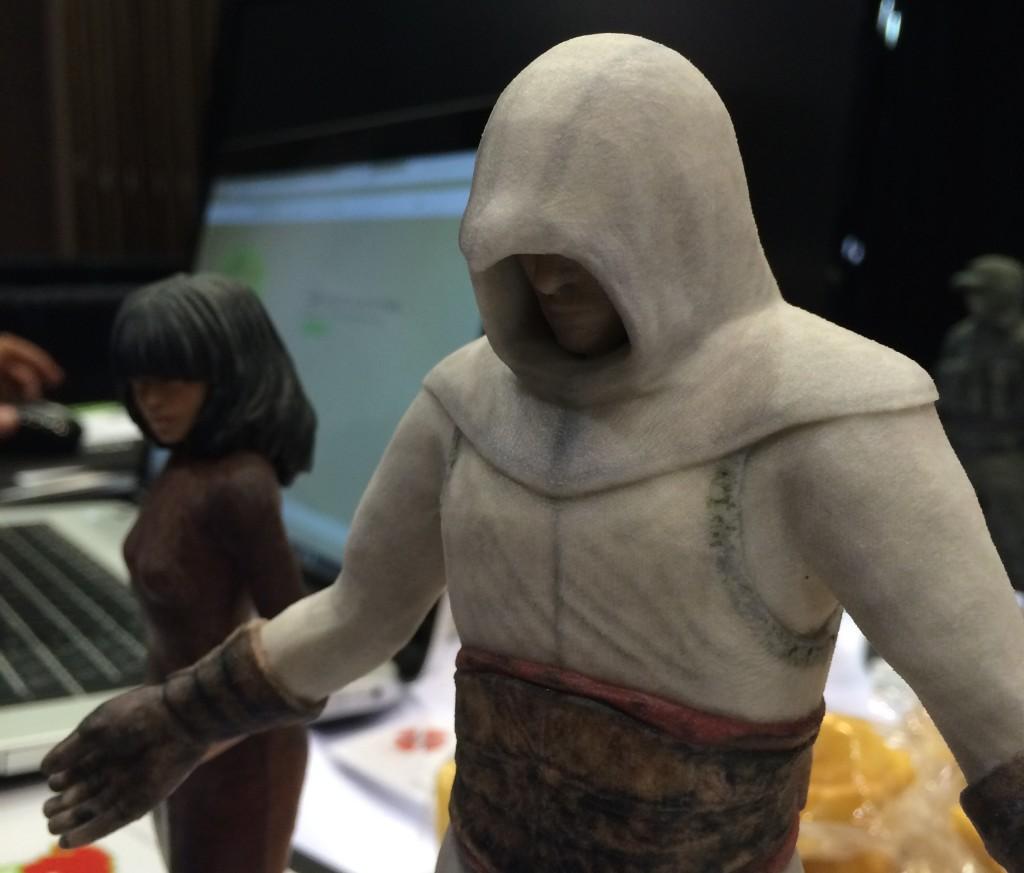
The public beta will feature several of MakePrintable repair options, like the ability to verify models are watertight, repair overlapping objects, correct flipped faces and the wall thickening feature. They plan to add new features soon, including auto hollowing, fill optimization and a transparency function. Once the full software launches, MakePrintable will be available to anyone, and multiple models can be uploaded at once and the program will simply email you when they are all completed. You can sign up for the beta here.
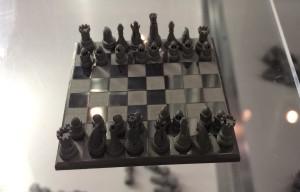 One of the cooler industrial applications that I saw was the ultra-tiny metal 3D printed parts manufactured by Swedish company Hoganas. The Hoganas process is a powder bed-based 3D printing process that combines ink-jet technology with a sintering process that results in fully-solid stainless steel parts with an incredible amount of detail. The company had a ton of amazing and tiny metal 3D prints on display, but the most amazing was this miniature chess set–for scale the chessboard is less than two inches wide. They also had one of the smallest metal 3D printed parts that I’ve ever seen, at only a few millimeters wide. For now the only metal parts that have been commercialized are stainless steel, however Hoganas is developing a process to produce titanium, silver and copper.
One of the cooler industrial applications that I saw was the ultra-tiny metal 3D printed parts manufactured by Swedish company Hoganas. The Hoganas process is a powder bed-based 3D printing process that combines ink-jet technology with a sintering process that results in fully-solid stainless steel parts with an incredible amount of detail. The company had a ton of amazing and tiny metal 3D prints on display, but the most amazing was this miniature chess set–for scale the chessboard is less than two inches wide. They also had one of the smallest metal 3D printed parts that I’ve ever seen, at only a few millimeters wide. For now the only metal parts that have been commercialized are stainless steel, however Hoganas is developing a process to produce titanium, silver and copper.
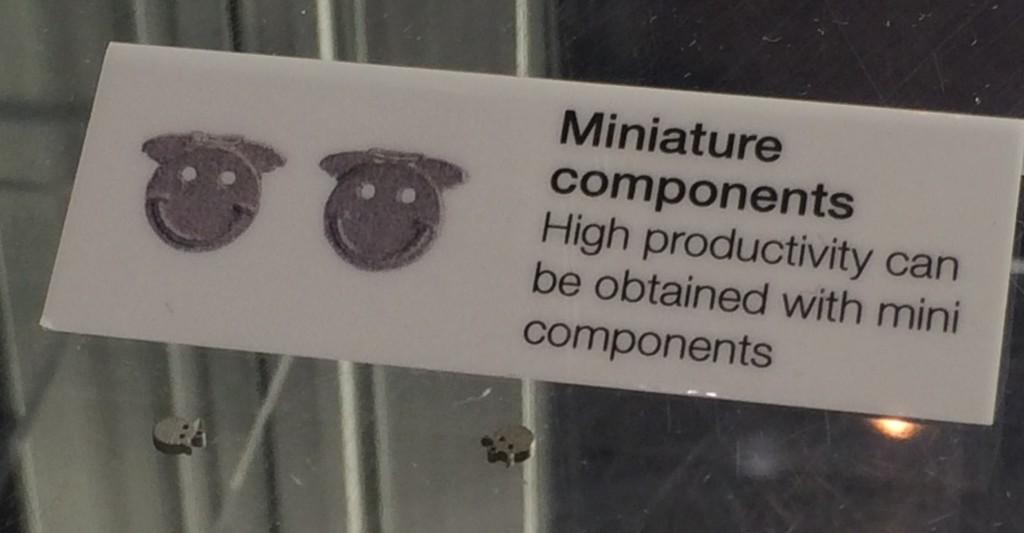 3D printing service provider Forecast 3D had probably the most ostentatious booth this year consisting of a full-sized race car. Forecast 3D brought their Harbinger, an awesome customized 1969 Ford Mustang and built for automobile manufacturer Agent 47 Competition Products. Forecast 3D included 51 parts that were either 3D printed or cast from 3D printed molds in the custom racer, and really shows off how many traditionally manufactured automobile components can be replaced using additive manufacturing.
3D printing service provider Forecast 3D had probably the most ostentatious booth this year consisting of a full-sized race car. Forecast 3D brought their Harbinger, an awesome customized 1969 Ford Mustang and built for automobile manufacturer Agent 47 Competition Products. Forecast 3D included 51 parts that were either 3D printed or cast from 3D printed molds in the custom racer, and really shows off how many traditionally manufactured automobile components can be replaced using additive manufacturing.
 I also got a chance to meet the team from 3D printing education and service provider HoneyPoint3D who was offering up their twenty hour Meshmixer online course. The class was crowdfunded on Kickstarter and funded at over 175%, making it one of the top 8% of 3D printing Kickstarter campaigns.
I also got a chance to meet the team from 3D printing education and service provider HoneyPoint3D who was offering up their twenty hour Meshmixer online course. The class was crowdfunded on Kickstarter and funded at over 175%, making it one of the top 8% of 3D printing Kickstarter campaigns.
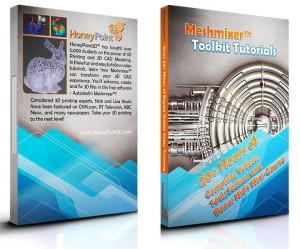 When HoneyPoint3D decided to start offering online classes, the reaction was a bit mixed. They weren’t the first 3D printing service provider who offers 3D software educational classes, but the ability for users to pursue the specific lessons that they were interested in rather than a basic overview was a new approach that seems to be paying off for them. HoneyPoint3D’s co-founders Liza Wallach-Kloski and Nick Kloski are also co-authoring the new Make Magazine’s book on 3D printing titled, “Getting Started with 3D Printing,” which is expected in January 2016.
When HoneyPoint3D decided to start offering online classes, the reaction was a bit mixed. They weren’t the first 3D printing service provider who offers 3D software educational classes, but the ability for users to pursue the specific lessons that they were interested in rather than a basic overview was a new approach that seems to be paying off for them. HoneyPoint3D’s co-founders Liza Wallach-Kloski and Nick Kloski are also co-authoring the new Make Magazine’s book on 3D printing titled, “Getting Started with 3D Printing,” which is expected in January 2016.
 The most unexpected use of industrial 3D printing was the 3D printed cast of the stop-motion Crackle comedy series SuperMansion. The models were printed using EnvisionTEC 3D printers and then meticulously hand painted. The raunchy comedy series was created by Bryan Cranston, and follows the adventures of a dysfunctional group of superheroes trying to survive ridiculous super villains, and living with each other.
The most unexpected use of industrial 3D printing was the 3D printed cast of the stop-motion Crackle comedy series SuperMansion. The models were printed using EnvisionTEC 3D printers and then meticulously hand painted. The raunchy comedy series was created by Bryan Cranston, and follows the adventures of a dysfunctional group of superheroes trying to survive ridiculous super villains, and living with each other.
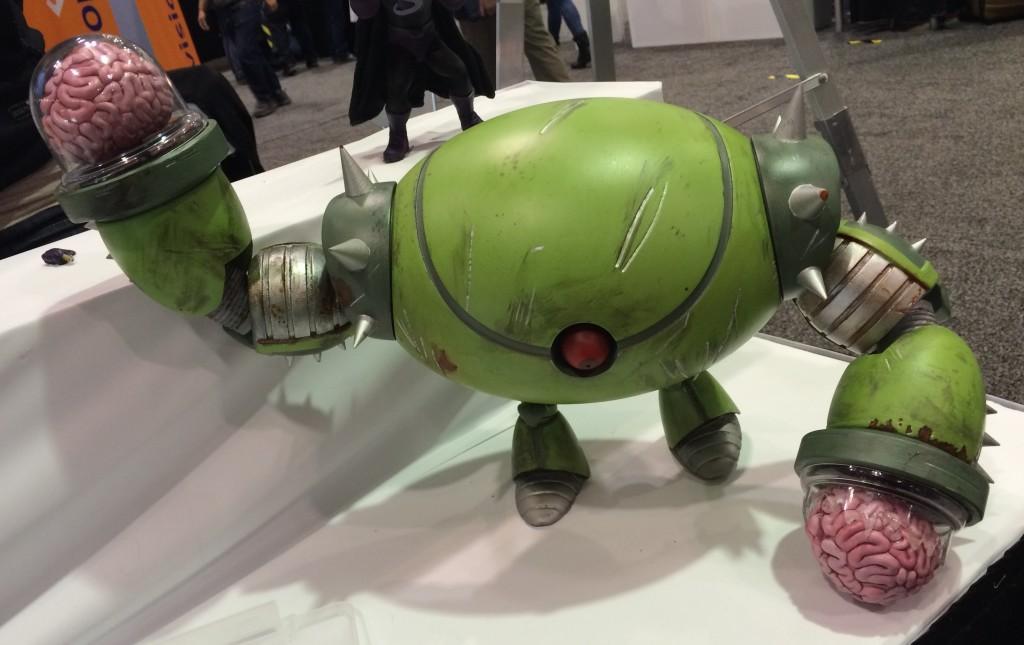 Here is the red band trailer for the series, but before you click play be aware that this stop-motion animation series is most certainly not safe for work:
Here is the red band trailer for the series, but before you click play be aware that this stop-motion animation series is most certainly not safe for work:
I was really impressed with the wide variety of 3D technology that this year’s Inside 3D Printing Conference Santa Clara had managed to bring together. Not only 3D printers, 3D scanners and software, but the full range of discussion topics was impressive. Many of them focused on the business of 3D printing, the future of the industry, rapidly exploding medical applications and of course the new kid on the block virtual reality. Make sure that you read Part One of my Inside 3D Printing Santa Clara coverage, and my write up of the future of intellectual property in a 3D printed world. And i’ll have more coverage of the amazing 3D printed artwork at the conference, as well as more of the 3D printers and technology throughout the next few days.
Subscribe to Our Email Newsletter
Stay up-to-date on all the latest news from the 3D printing industry and receive information and offers from third party vendors.
You May Also Like
3D Printing Unpeeled: New Arkema Material for HP, Saddle and Macro MEMS
A new Arkema material for MJF is said to reduce costs per part by up to 25% and have an 85% reusability ratio. HP 3D HR PA 12 S has been...
3D Printing News Briefs, January 20, 2024: FDM, LPBF, Underwater 3D Printer, Racing, & More
We’re starting off with a process certification in today’s 3D Printing News Briefs, and then moving on to research about solute trapping, laser powder bed fusion, and then moving on...
3D Printing Webinar and Event Roundup: December 3, 2023
We’ve got plenty of events and webinars coming up for you this week! Quickparts is having a Manufacturing Roadshow, America Makes is holding a Member Town Hall, Stratafest makes two...
Formnext 2023 Day Three: Slam Dunk
I’m high—high on trade show. I’ve met numerous new faces and reconnected with old friends, creating an absolutely wonderful atmosphere. The excitement is palpable over several emerging developments. The high...































